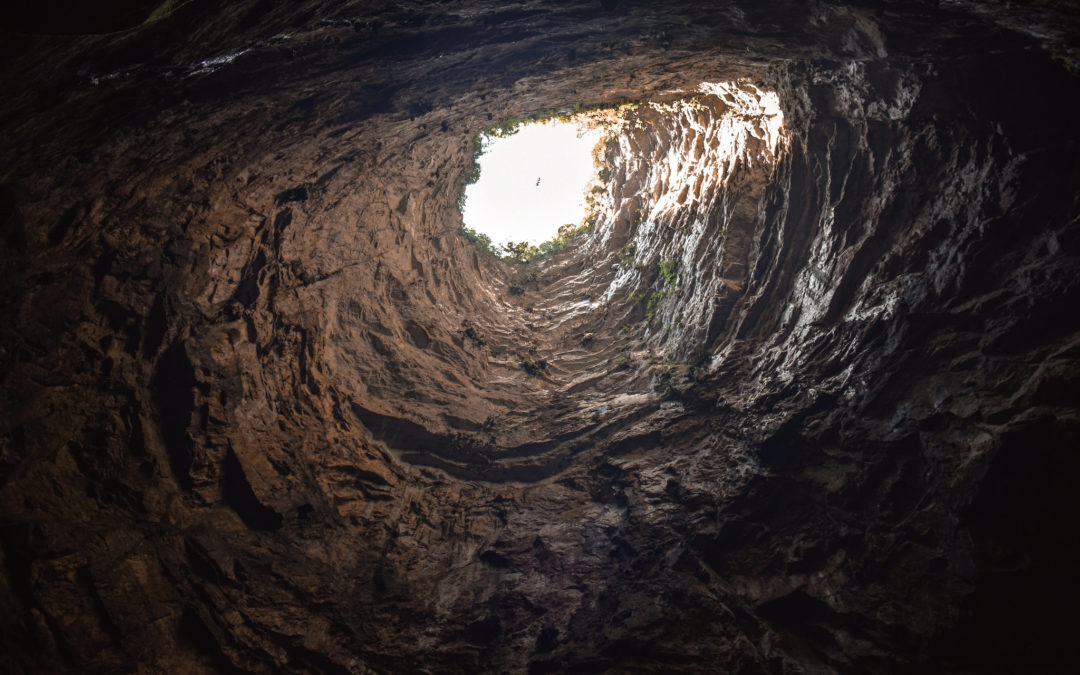February 2019: Over a decade and a half ago, I watched the nature series Planet Earth on Discovery Channel. The episode on the worlds greatest caves opened with the narrator, famed English naturalist David Attenborough, saying “This is the planets final frontier in a world where only the most adventurous dare to go”. Next a man base jumped into the enormous opening of the cave and disappeared into its black depths. The cave was so deep according to Attenborough that the base jumper could free fall from the top for 10 seconds before needing to deploy a parachute. This was the moment I knew that some day I would need to explore this cave.
The cave located near San Luis Potosi, Mexico on Haustic indigenous tribal land is known in Spanish as Sotano del las Golondrinas or the Cave of the Swallows. The cave is named after the millions of little birds-cave swiftlets that call it home. It is the largest known cave shaft in the world and to reach the bottom a descent by rope of over 1,400 feet is required.
In February, 2019 my dream of descending into the Cave of Swallows was realized and I organized a weekend trip with four good friends into the cave. Our plan was to rappel into the Cave of the Swallows, and a second cave in the area, Sotano Del Cepillo. Then time permitting raft down the turquoise green Tampaon River.
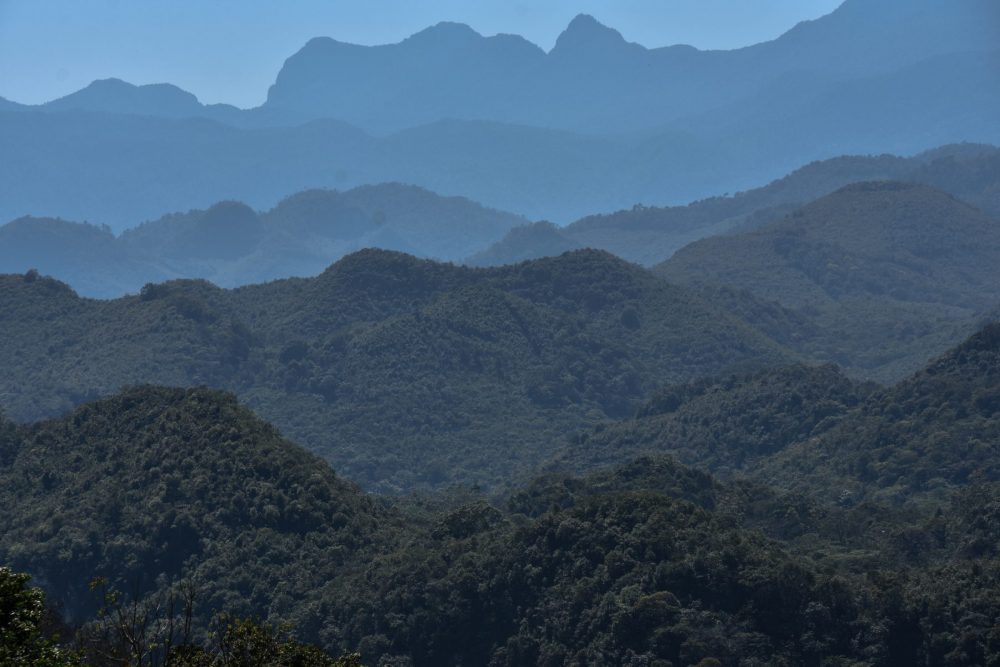
Via an afternoon direct flight, we flew from Tijuana to San Luis Petosi. Then a driver I pre-arranged picked us up at the airport and drove us 5-6 hours to the small town of Xilitla, where we arrived late in the evening, met our cave guide, discussed a tentative plan for the weekend and spent what was left of the night sleeping in our budget hotel. Early the next morning at 5am we departed for the cave of the Swallows near the Huasteca indigenous village of Aquismon. From Aquismon, there is a narrow road that was recently paved as a gift to the local people by a previous Mexican President who rappelled into the cave. The narrow road winds and bends as it ascends through rainforest for about 30 minutes until it arrives at a small village where you turn off onto a gravel parking lot. From there, a steep walking trail maybe a mile long, leads down to a viewing platform that overlooks the opening of the cave.
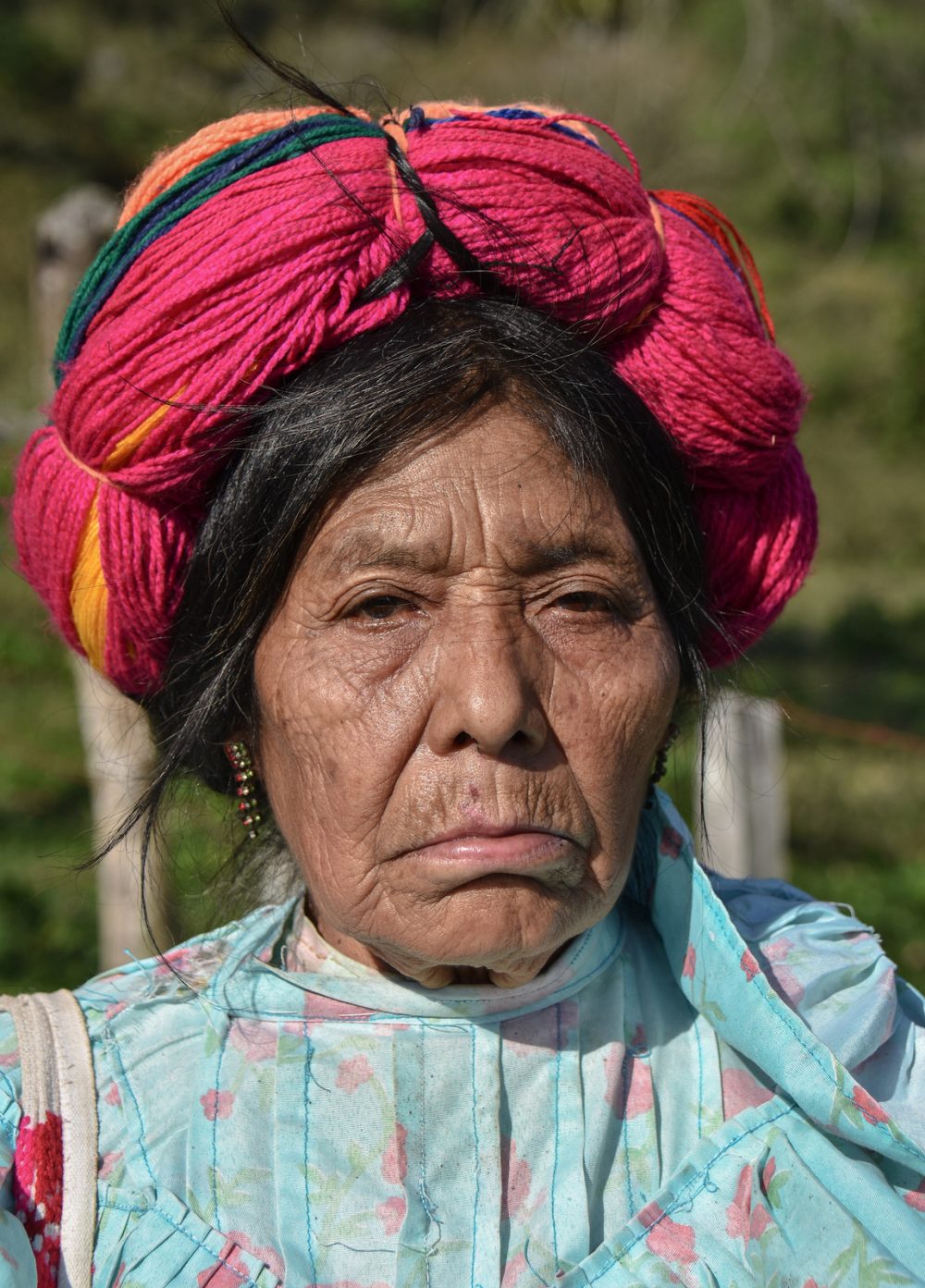
Select video above to watch the daily swiftlet exodus

The Cave of the Swallows is a pit cave or a vertical shaft. It is shaped like a bottle (see diagram to the right) and the entrance at the top is 200′ wide but shortly below this the ceiling widens to well over a 1000′ across. As I found out as I was lowered another 5′ the wall of the cave quickly gave way and now I was freely dangling in open space. I felt the rope jerk and twist as we continued to be lowered. We were lowered for 5-10 second intervals to keep the friction from becoming too great on the rope. On the top the men would lower our rope by hand through a small metal bracket to keep it from slipping or getting stuck.
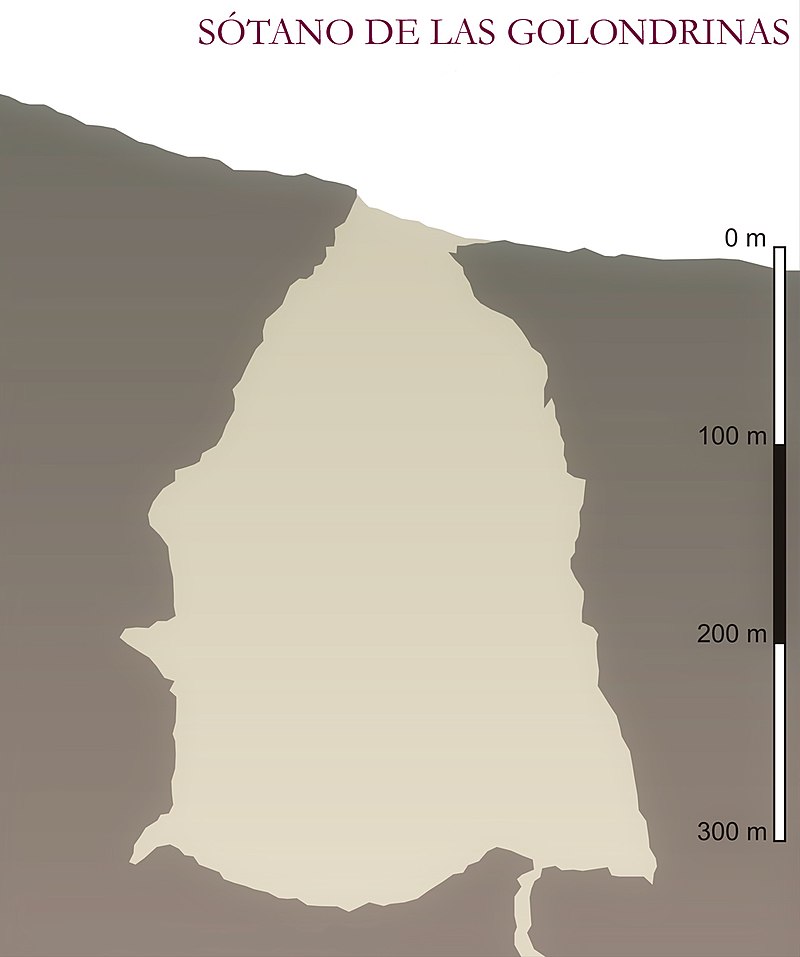
Because the height of the cave is so great, there is a lot of friction on the rope, and to lessen the friction one man will continuously spray water on the rope from a spray bottle.

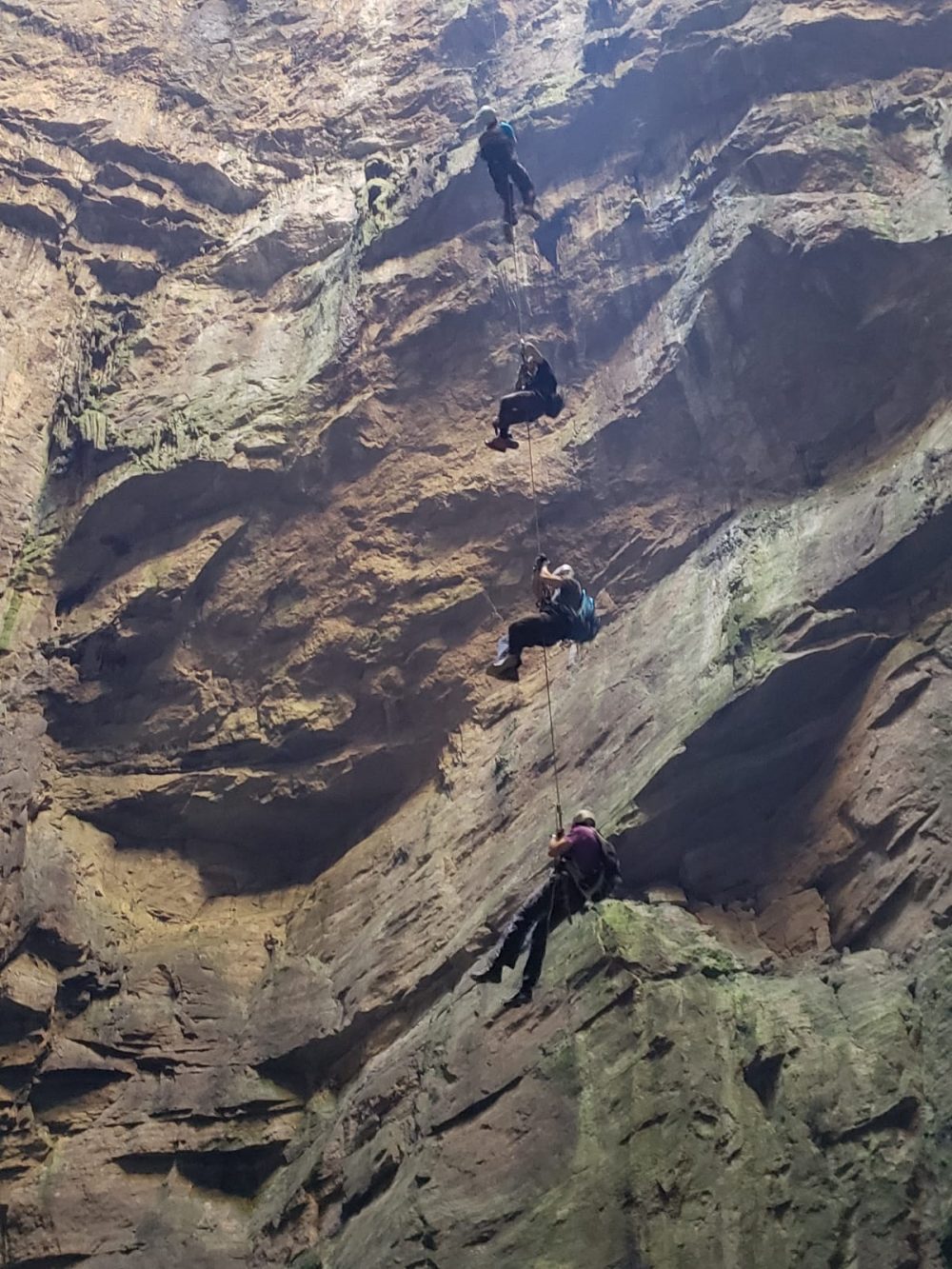
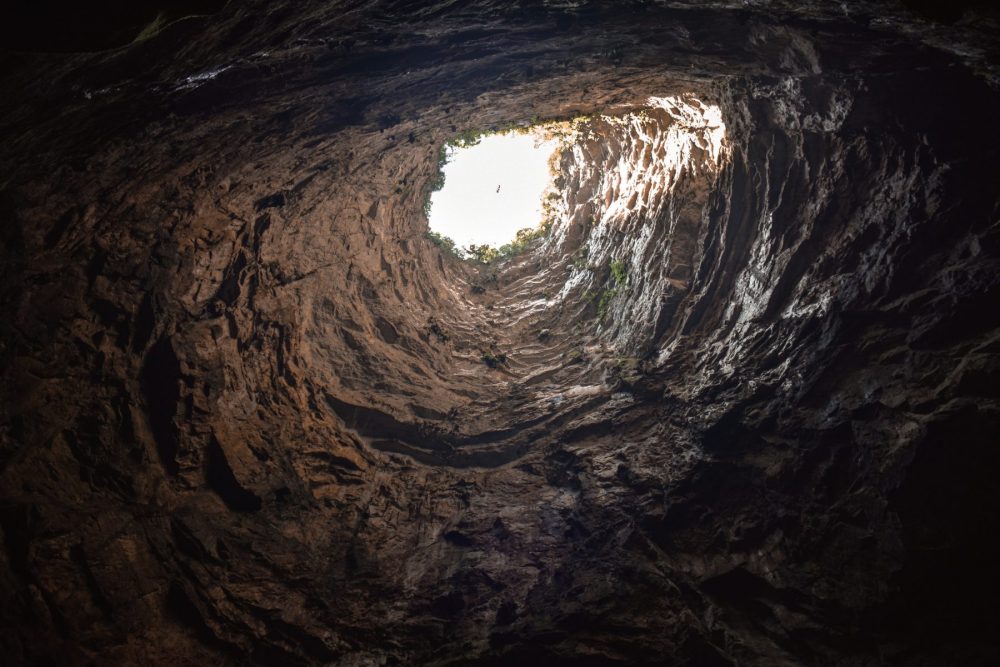
Click the Video above of the Ascent/View from the Rope hamging a Thousand Feet in the Air
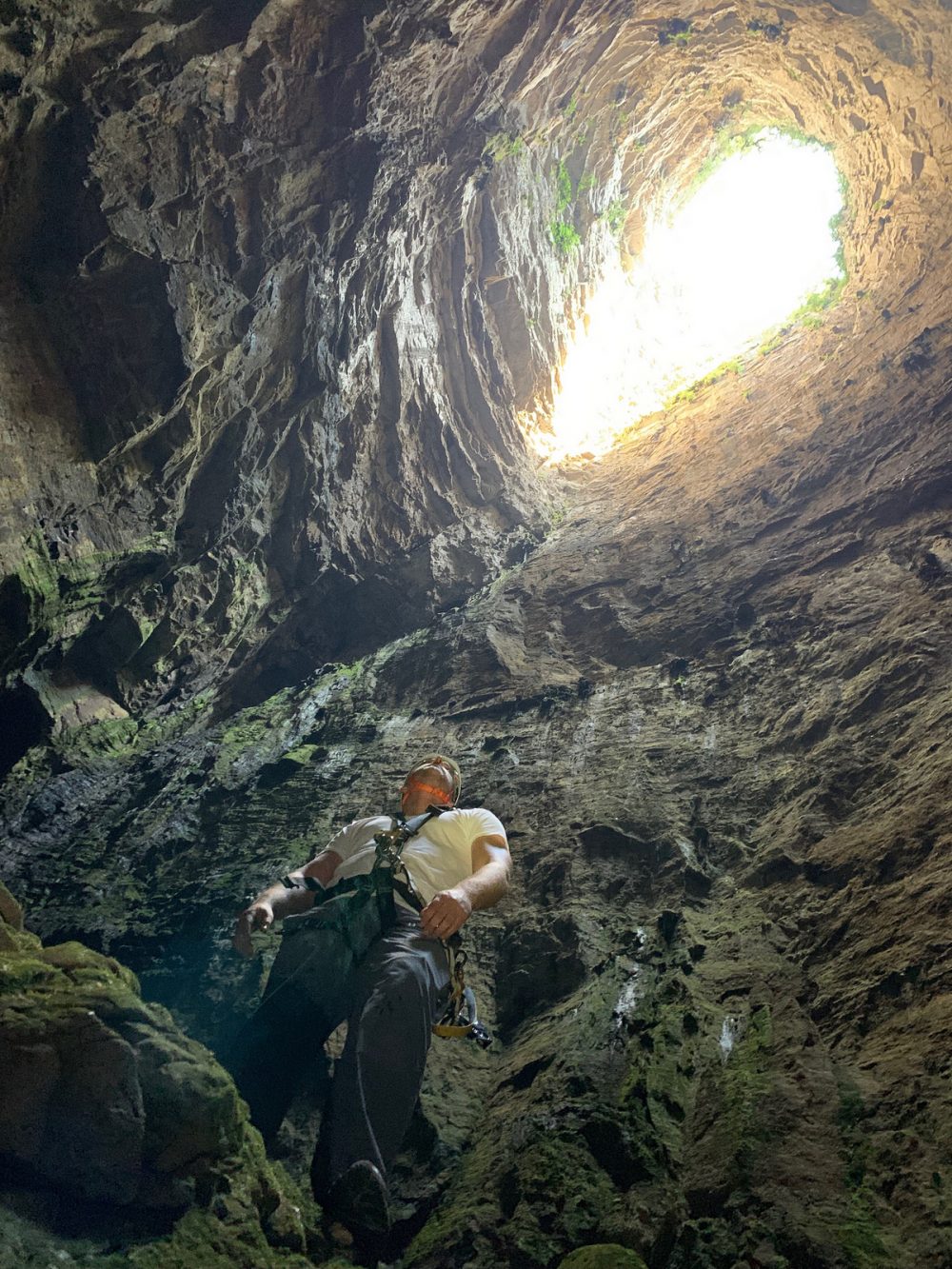
Me Looking Up to the Entrance of the Cave and Rope I Just Descended On
See video above of inside of cave
Probably the last thing that I needed was to be reminded of someone that previously died in the cave. Our guide showed us a memorial to a man that perished in the cave when his parachute failed to open properly when base jumping. The cave was once popular among extreme base jumpers but it has since been banned by the Huasteca people because it disturbs the birds. The Huasteca people have a strong bond with nature and even though they seek to monetize the cave, they have done a great job of protecting it’s ecosystem.
See video above of inside of cave
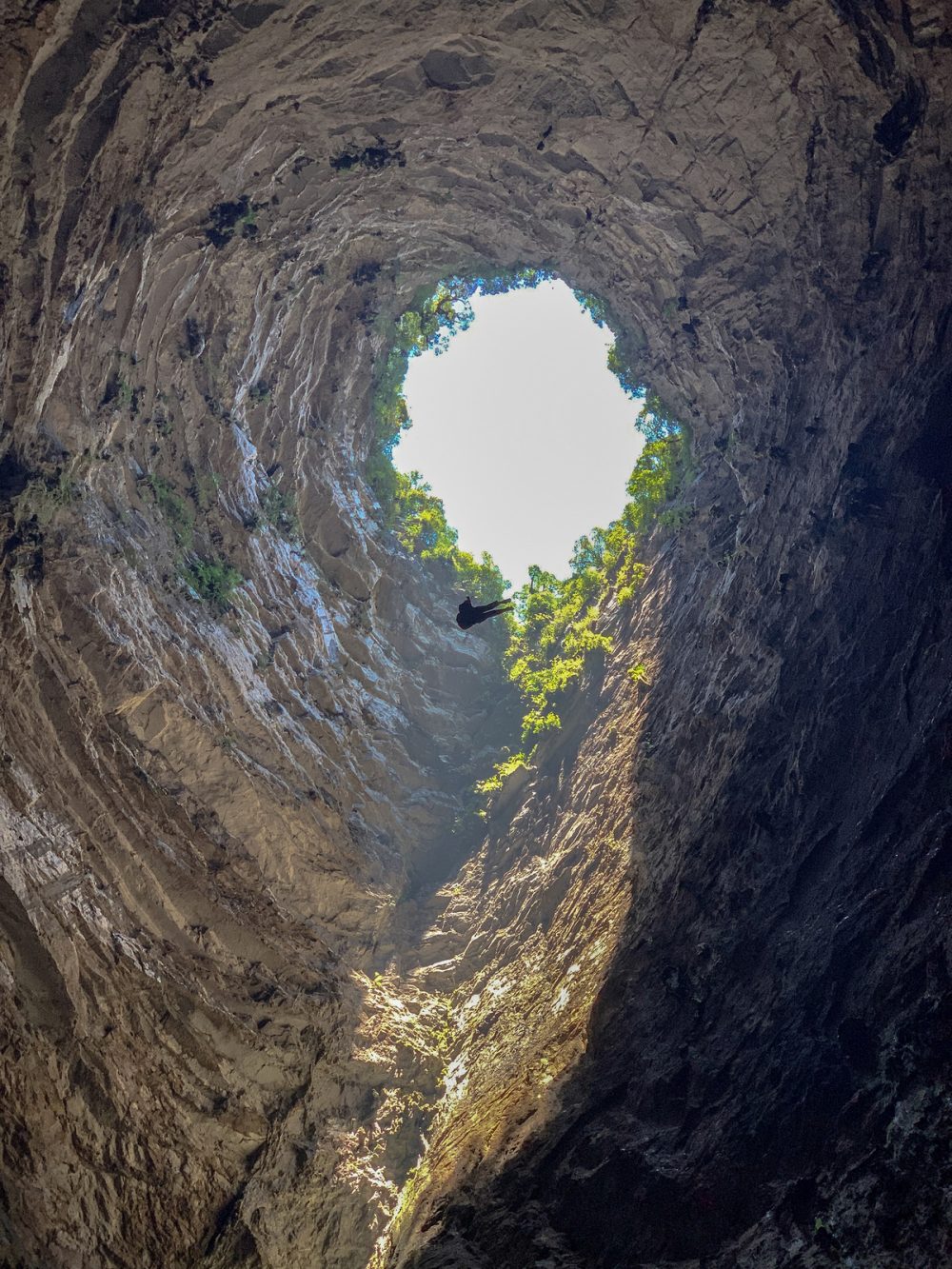
Click the Video above of the Ascent/View from Rope While Hanging a thousand feet in the air
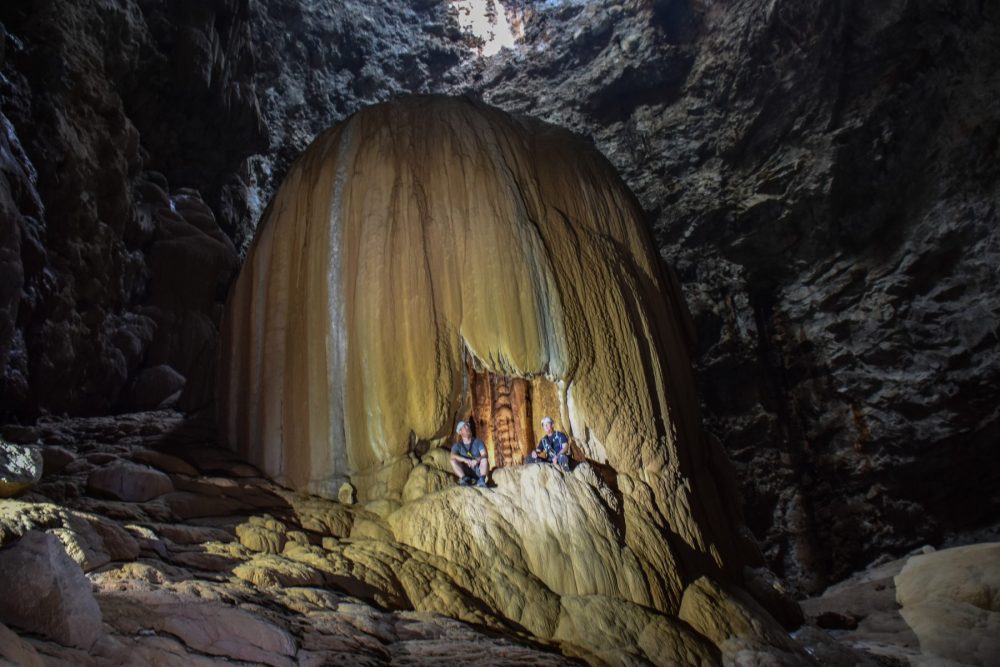
The entrance, a hole into the 900 foot below us was surrounded by trees and much smaller than the entrance to the Cave of the Swallows. There were no rules governing this cave like with the Cave of the Swallows. Here, we could use mechanical devices to raise us from the cave. Our guides decided to use a motorcycle. We hired some nearby villagers with a motorbike. We would be lowered into the cave by the local village men and brought back up to the entrance by attaching our ropes to the motorcycle. One man would drive the motorcycle down the hill from the cave entrance, pulling us the whole 900 feet up to the top in a blistering speed, while another man would watch us to make alert the bike driver when to stop. Any number of things could have gone wrong but this is a running theme for this kind of trip.
The descent was easy after the much scarier and deeper one in cave of the Swallows. The bottom of this cave was much more magical than Cave of the Swallows. The formations were more mazing. There was a lake and stalagmites the size of houses. We spend a few hours exploring the cave and then it was time to ascend.
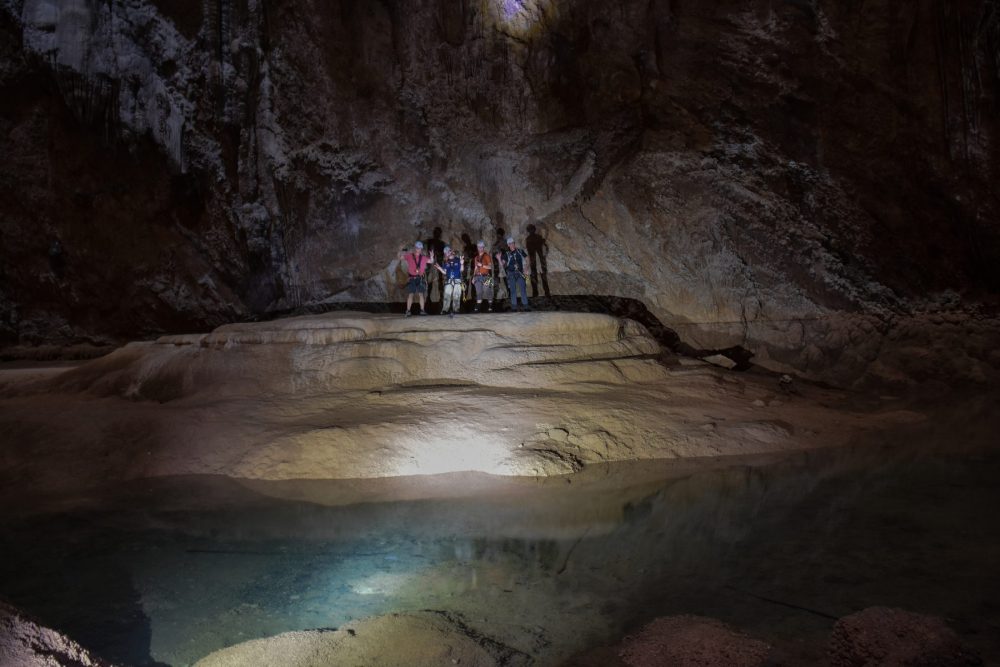
We went up in groups of two. Our waist harnesses were connected to the rope by a carabiner and our cave guide would tug on the rope to alert the top to pull the two up by motorcycle. As soon as he pulled, the two would be yanked upwards. One of my friends was standing to close to a loop created by the ropes slack, and their feet were pulled right out from beneath them sending them falling to the ground.

The ascent of 900 feet took approx. 1 minute with the motorcycle, much faster than the 45 minute ascent in cave of the Swallows. The difference was with such speed in the scent of this cave, the spinning on the top was relentless. The motorcycle would pull you within 30 feet of the top of the cave and then stop leaving you violently spinning in the darkness and on the verge of puking.
I had to close my eyes. The spinning continued for a few minutes while the crew on top transferred the ropes from the motorcycle to the manual pullers, who would then finish pulling you up to the top.

